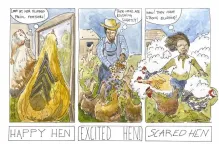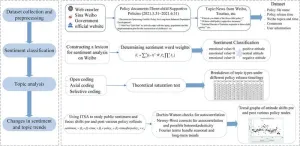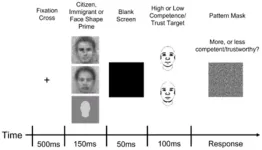(Press-News.org)
Ductal carcinoma in situ (DCIS) is a type of preinvasive tumor that sometimes progresses to a highly deadly form of breast cancer. It accounts for about 25 percent of all breast cancer diagnoses.
Because it is difficult for clinicians to determine the type and stage of DCIS, patients with DCIS are often overtreated. To address this, an interdisciplinary team of researchers from MIT and ETH Zurich developed an AI model that can identify the different stages of DCIS from a cheap and easy-to-obtain breast tissue image. Their model shows that both the state and arrangement of cells in a tissue sample are important for determining the stage of DCIS.
Because such tissue images are so easy to obtain, the researchers were able to build one of the largest datasets of its kind, which they used to train and test their model. When they compared its predictions to conclusions of a pathologist, they found clear agreement in many instances.
In the future, the model could be used as a tool to help clinicians streamline the diagnosis of simpler cases without the need for labor-intensive tests, giving them more time to evaluate cases where it is less clear if DCIS will become invasive.
“We took the first step in understanding that we should be looking at the spatial organization of cells when diagnosing DCIS, and now we have developed a technique that is scalable. From here, we really need a prospective study. Working with a hospital and getting this all the way to the clinic will be an important step forward,” says Caroline Uhler, a professor in the Department of Electrical Engineering and Computer Science (EECS) and the Institute for Data, Systems, and Society (IDSS), who is also director of the Eric and Wendy Schmidt Center at the Broad Institute of MIT and Harvard and a researcher at MIT’s Laboratory for Information and Decision Systems (LIDS).
Uhler, co-corresponding author of a paper on this research, is joined by lead author Xinyi Zhang, a graduate student in EECS and the Eric and Wendy Schmidt Center; co-corresponding author GV Shivashankar, professor of mechogenomics at ETH Zurich jointly with the Paul Scherrer Institute; and others at MIT, ETH Zurich, and the University of Palermo in Italy. The open-access research was published in Nature Communications.
Combining imaging with AI
Between 30 and 50 percent of patients with DCIS develop a highly invasive stage of cancer, but researchers don’t know the biomarkers that could tell a clinician which tumors will progress.
Researchers can use techniques like multiplexed staining or single-cell RNA sequencing to determine the stage of DCIS in tissue samples. However, these tests are too expensive to be performed widely, Shivashankar explains.
In previous work, these researchers showed that a cheap imagining technique known as chromatin staining could be as informative as the much costlier single-cell RNA sequencing.
For this research, they hypothesized that combining this single stain with a carefully designed machine-learning model could provide the same information about cancer stage as costlier techniques.
First, they created a dataset containing 560 tissue sample images from 122 patients at three different stages of disease. They used this dataset to train an AI model that learns a representation of the state of each cell in a tissue sample image, which it uses to infer the stage of a patient’s cancer.
However, not every cell is indicative of cancer, so the researchers had to aggregate them in a meaningful way.
They designed the model to create clusters of cells in similar states, identifying eight states that are important markers of DCIS. Some cell states are more indicative of invasive cancer than others. The model determines the proportion of cells in each state in a tissue sample.
Organization matters
“But in cancer, the organization of cells also changes. We found that just having the proportions of cells in every state is not enough. You also need to understand how the cells are organized,” says Shivashankar.
With this insight, they designed the model to consider proportion and arrangement of cell states, which significantly boosted its accuracy.
“The interesting thing for us was seeing how much spatial organization matters. Previous studies had shown that cells which are close to the breast duct are important. But it is also important to consider which cells are close to which other cells,” says Zhang.
When they compared the results of their model with samples evaluated by a pathologist, it had clear agreement in many instances. In cases that were not as clear-cut, the model could provide information about features in a tissue sample, like the organization of cells, that a pathologist could use in decision-making.
This versatile model could also be adapted for use in other types of cancer, or even neurodegenerative conditions, which is one area the researchers are also currently exploring.
“We have shown that, with the right AI techniques, this simple stain can be very powerful. There is still much more research to do, but we need to take the organization of cells into account in more of our studies,” Uhler says.
This research was funded, in part, by the Eric and Wendy Schmidt Center at the Broad Institute, ETH Zurich, the Paul Scherrer Institute, the Swiss National Science Foundation, the U.S. National Institutes of Health, the U.S. Office of Naval Research, the MIT Jameel Clinic for Machine Learning and Health, the MIT-IBM Watson AI Lab, and a Simons Investigator Award.
###
Written by Adam Zewe, MIT News
END
Mice don’t get Alzheimer’s—and while that’s good news for mice, it’s a big problem for biomedical researchers seeking to understand the disease and test new treatments. Now, researchers at The Jackson Laboratory are working to create the first strain of mice that’s genetically susceptible to late-onset Alzheimer’s, with potentially transformative implications for dementia research.
In humans, two of the defining traits of Alzheimer’s disease are amyloid plaques between brain cells, and tangles of tau proteins within neurons. In mice, however, intercellular ...
From studying the human genome, to analyzing the way proteins are encoded, or monitoring RNA expression, researchers are rapidly gaining a far richer understanding of the complex genetic and cellular mechanisms that underpin dementia. But there’s a catch: While new technologies are revealing myriad avenues for Alzheimer’s research, it’s impossible to know in advance which research pathways will lead to effective treatments.
“We have countless potential targets, but we don’t know which ones to aim at,” said Greg Carter, the Bernard and Lusia Milch Endowed Chair at the ...
Hens fluff their head feathers and blush to express different emotions and levels of excitement, according to a study publishing July 24, 2024, in the open-access journal PLOS ONE by Cécile Arnould and colleagues from INRAE and CNRS, France.
Facial expressions are an important part of human communication that allow us to convey our emotions. Scientists have found similar signals of emotion in other mammals such as dogs, pigs and mice. Although birds can produce facial expressions by moving their head feathers and flushing their skin, it is unclear whether they express emotions in this way. To investigate, researchers filmed ...
An analysis of comments on Chinese social media platform Sina Weibo reveals trends in the public response to measures implemented to support China’s three-child policy, highlighting concerns about women’s rights and employment. Lijuan Peng of Zhejiang Gongshang University in Hangzhou, China, and colleagues present these findings in the open-access journal PLOS ONE on July 24, 2024.
For decades, China’s one-child policy restricted most families to having just one child. In 2021, to combat a falling birthrate, China introduced its three-child policy, allowing couples to have up to three children. To help encourage childbirth, ...
Our ability to recognize music might not diminish with age, with older concert attendees identifying themes in music as well as younger participants
###
Article URL: https://journals.plos.org/plosone/article?id=10.1371/journal.pone.0305969
Article Title: Age and familiarity effects on musical memory
Author Countries: Canada, UK
Funding: The author(s) disclosed receipt of the following financial support for the research, authorship, and/or publication of this article: this work was supported by BRZ’s Natural Sciences and Engineering Research Council of Canada grant. The funders had no role ...
The COVID-19 pandemic significantly widened existing economic and health disparities between wealthy and low-income countries and slowed progress toward health-related Sustainable Development Goals (SDGs), according to a new study published July 24, 2024, in the open-access journal PLOS ONE by Wanessa Miranda of Federal University of Minas Gerais, Brazil, and colleagues.
The global SDGs were established in 2015 as a wide and integrated agenda with themes ranging from eradicating poverty and promoting well-being to addressing socioeconomic ...
Even people who harbor positive sentiments toward immigrants imagine immigrants' faces as less trustworthy and less competent than US citizens' faces
###
Article URL: https://journals.plos.org/plosone/article?id=10.1371/journal.pone.0306872
Article Title: Intergroup evaluative bias in facial representations of immigrants and citizens in the United States
Author Countries: USA
Funding: This work was facilitated by the National Science Foundation Division of Behavioral and Cognitive Sciences, grant #1764097 awarded to ART and grant #2215236 awarded to ...
New research led by the University of East Anglia (UEA) and Plymouth Marine Laboratory (PML) has found that the Southern Ocean absorbs more carbon dioxide (CO2) than previously thought.
Using direct measurements of CO2 exchange, or fluxes, between the air and sea, the scientists found the ocean around Antarctica absorbs 25% more CO2 than previous indirect estimates based on shipboard data have suggested.
The Southern Ocean plays a major role in absorbing CO2 emitted by human activities, a process vital for controlling the Earth's climate. However, there are big uncertainties ...
Giant plumes of Sahara Desert dust that gust across the Atlantic can suppress hurricane formation over the ocean and affect weather in North America.
But thick dust plumes can also lead to heavier rainfall – and potentially more destruction – from landfalling storms, according to a July 24 study in Science Advances. The research shows a previously unknown relationship between hurricane rainfall and Saharan dust plumes.
“Surprisingly, the leading factor controlling hurricane precipitation is not, as traditionally thought, sea surface temperature or humidity in the atmosphere. Instead, it’s Sahara dust,” said the corresponding ...
Acute myeloid leukaemia is one of the deadliest cancers. Leukaemic stem cells responsible for the disease are highly resistant to treatment. A team from the University of Geneva (UNIGE), University Hospital of Geneva (HUG), and Inserm has made a breakthrough by identifying some of the genetic and energetic characteristics of these stem cells, notably a specific iron utilisation process. This process could be blocked, leading to the death or weakening of these stem cells without affecting healthy cells. These results, published in Science Translational Medicine, pave the way for new therapeutic strategies.
Acute ...





